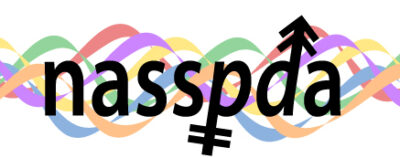#BlackLivesMatter
Originally posted on NASSPDA website: June 28, 2020
Posted: October 24, 2021
By: Emma DiFrancesco
It’s Pride Month once again!
Pride looks a little bit different this year, as most of the parades and dance events that we’ve grown to love have been cancelled this year due to COVID-19. But that doesn’t mean we can’t keep the spirit of Pride!
As the North American Same-Sex Partner Dance Association, we owe so much to Pride and to the LGBTQ+ rights movement. In the US, the movement would not be what it is without events such as the Compton’s Cafeteria Riots of 1966, and the Stonewall Riots of 1969. These two events, started by people in the most marginalized LGBTQ+ communities, were acts of resistance against police brutality. Those catalysts gave way to both the Pride march and organizations such as the Gay Liberation Front, Gay Activists Alliance, and STAR, as well as a new era of visibility for LGBTQ+ communities. Major players from this era include Marsha P. Johnson, Miss Major Griffin-Gracy, and Stormé DeLarverie, all Black women, as well as Sylvia Rivera, who was Latina.
Today, police and vigilante brutality against Black communities, including Black LGBTQ+ communities, is still one piece in the larger problem of American racism. These past two weeks, in response to the murders of George Floyd, Breonna Taylor, Nina Pop, and Tony McDade, and the threat of police brutality against Christian Cooper, protesters across the US and across the world have used a diversity of tactics to bring attention to this issue and to the larger issue of white supremacy in the United States and worldwide.
Unfortunately, the issues of white supremacy and anti-Blackness extend to our beloved ballroom dance industry. So many of the dances we compete originated in African, Afro-Caribbean, and African-American music and movement, before white dancers from the US, UK, and other Western countries codified them for a white market. Racism has continued to permeate our industry and community, and many Black dancers-and non-Black dancers of color-are coming forward to tell their stories of discrimination in the industry. It is the rest of the community’s responsibility to listen to them when they choose to speak out, credit them and compensate when necessary, and adjust practices accordingly, as it has been for far before these past two weeks.
We cannot be silent on issues like these. Many dancers in the industry, as well as major organizations believe ballroom dance is exempt from social issues, and so do not speak about them, or post a hashtag but do not explore the issues in depth. However, we are NASSPDA. We have known since our inception that ballroom dance, and partner dance in general, is political. It is a reflection of which kinds of bodies and which forms of love are socially acceptable and beautiful.
We cannot divorce the LGBTQ+ movement, or NASSPDA’s mission, from any other movement in the dance industry or in the larger world. All struggles for justice-race, gender, sexuality, class, age, ability, nationality, size, and more-are connected. As many historical figures have repeated throughout history, from Emma Lazarus to Maya Angelou to Janelle Monáe, none of us are free until all of us are free. It is not and should never be up for debate that #BlackLivesMatter.
